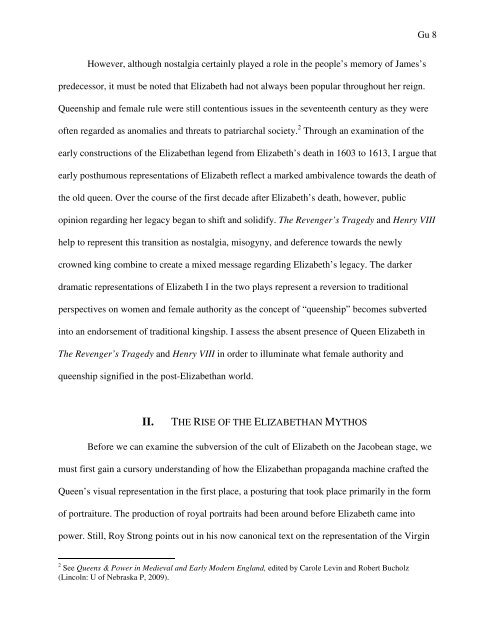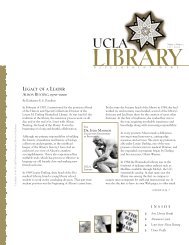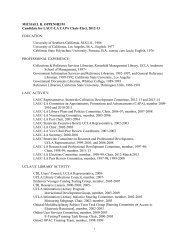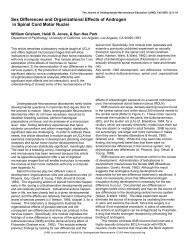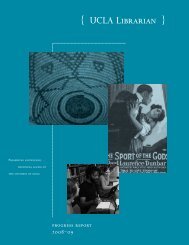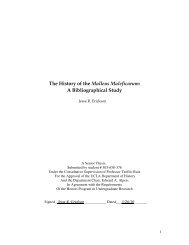Research Paper - UCLA Library
Research Paper - UCLA Library
Research Paper - UCLA Library
Create successful ePaper yourself
Turn your PDF publications into a flip-book with our unique Google optimized e-Paper software.
However, although nostalgia certainly played a role in the people’s memory of James’s<br />
predecessor, it must be noted that Elizabeth had not always been popular throughout her reign.<br />
Queenship and female rule were still contentious issues in the seventeenth century as they were<br />
often regarded as anomalies and threats to patriarchal society. 2 Through an examination of the<br />
Gu 8<br />
early constructions of the Elizabethan legend from Elizabeth’s death in 1603 to 1613, I argue that<br />
early posthumous representations of Elizabeth reflect a marked ambivalence towards the death of<br />
the old queen. Over the course of the first decade after Elizabeth’s death, however, public<br />
opinion regarding her legacy began to shift and solidify. The Revenger’s Tragedy and Henry VIII<br />
help to represent this transition as nostalgia, misogyny, and deference towards the newly<br />
crowned king combine to create a mixed message regarding Elizabeth’s legacy. The darker<br />
dramatic representations of Elizabeth I in the two plays represent a reversion to traditional<br />
perspectives on women and female authority as the concept of “queenship” becomes subverted<br />
into an endorsement of traditional kingship. I assess the absent presence of Queen Elizabeth in<br />
The Revenger’s Tragedy and Henry VIII in order to illuminate what female authority and<br />
queenship signified in the post-Elizabethan world.<br />
II. THE RISE OF THE ELIZABETHAN MYTHOS<br />
Before we can examine the subversion of the cult of Elizabeth on the Jacobean stage, we<br />
must first gain a cursory understanding of how the Elizabethan propaganda machine crafted the<br />
Queen’s visual representation in the first place, a posturing that took place primarily in the form<br />
of portraiture. The production of royal portraits had been around before Elizabeth came into<br />
power. Still, Roy Strong points out in his now canonical text on the representation of the Virgin<br />
2 See Queens & Power in Medieval and Early Modern England, edited by Carole Levin and Robert Bucholz<br />
(Lincoln: U of Nebraska P, 2009).


